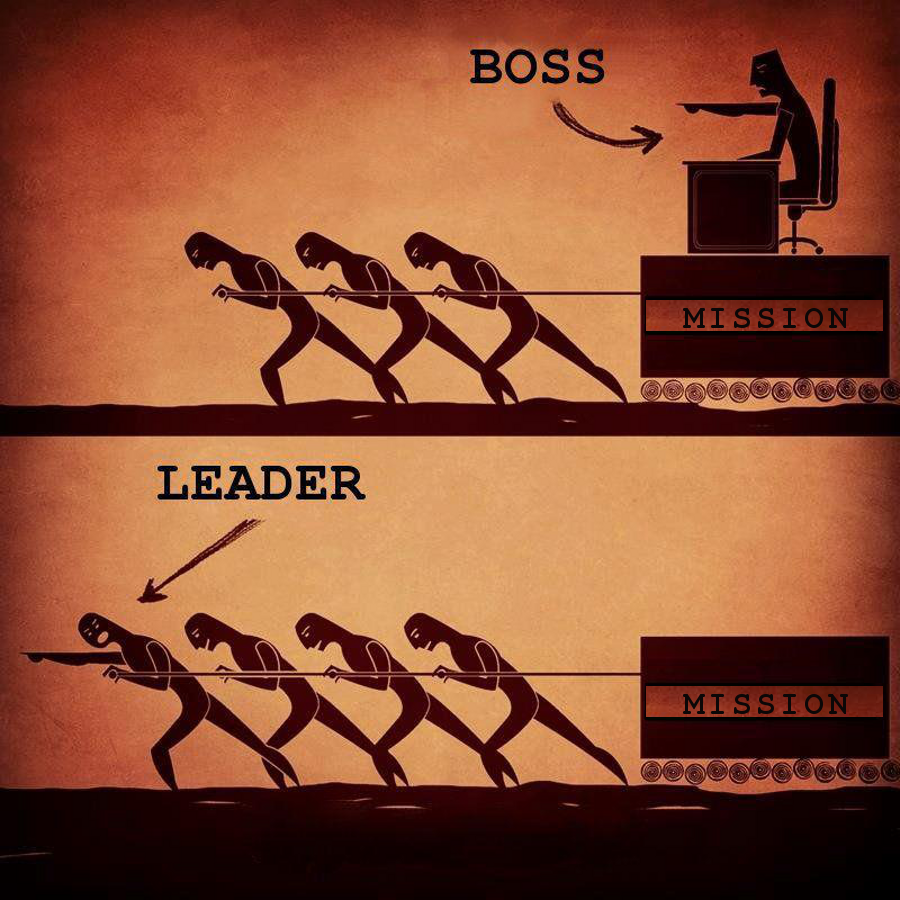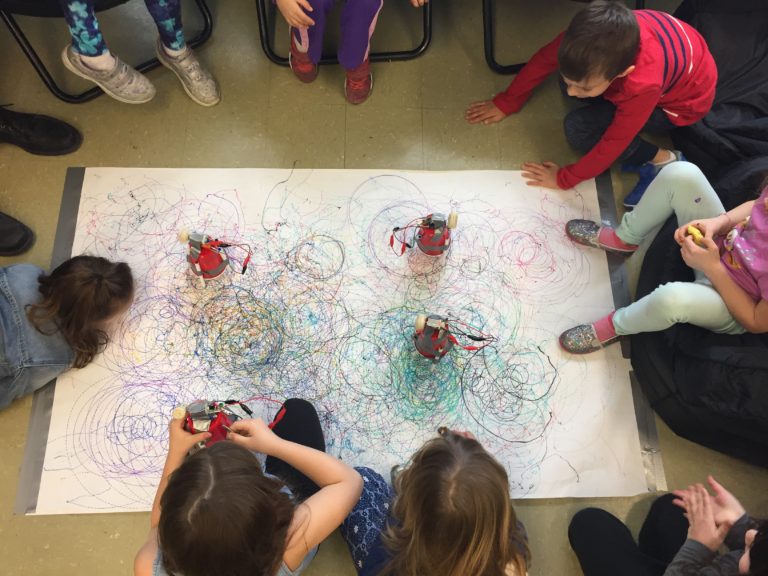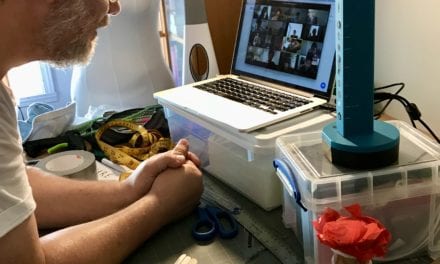This week I invite you to join a conversation that I had with a dynamic teacher as we discuss a Literature Circle project that she undertook with her Cycle 1 students.
Teacher’s name: Kerry Ballard
School: Lower Canada College
Subject: English Language Arts
Levels: Grade 1
Experience: 15 years
Melanie: Can you tell us a little bit about yourself?
Kerry: I am thrilled to be profiled on the LEARN website! I have been teaching for fifteen years and have worked in private schools in both Toronto and Montreal. I have taught almost every subject and grade level, but my passion remains cycle 1, ELA. My husband (who is also a teacher) and I are the proud parents of three young boys. They are already growing into avid readers!
Melanie: What inspired you to start this project?
Kerry: The Book Club project was something I had been thinking about for some time. Several years ago I had done some work at MELS correcting grade six LA exams. One of the issues that kept coming up was, “How are we teaching students to think and respond about their reading?” When I began teaching grade one last year, my school was implementing reading comprehension strategy instruction at every grade level. As my students were just learning to read, I struggled with making the teaching meaningful and sought ways to put the teaching and learning into a context. I began to research the work of experts such as Harvey Daniels and Stephanie Harvey, and after reading their book, Comprehension and Collaboration (Heinemann, 2011), and attending a Heinemann conference, the project began to take shape.
Melanie: Can you give us a quick overview of the Book Club?
Kerry: I teach in a bilingual grade one, where I have two groups of students, seen on alternate days. Working on a ten-day cycle, each group met three times per book. At the beginning of each new session, I established my goals for the students, giving myself time to plan each meeting and design or gather resources, if need be.
It is particularly important to note that with grade one, every step of the Book Club process was modelled, from choosing a book, to having effective discussions, to what to put in a Book Club journal.
A typical Book Club week opened with time for the students to select new books. I laid out multiple copies of each book (no more than 5 to a group) and allowed the students the opportunity to browse before making a choice that was of interest to them. Allowing the students to self select books increased their motivation to read and incidentally created heterogeneous groups. After they chose their books, the students gathered with their group and participated in shared reading. A weekly tracking sheet was handed out with assignments, that included a nightly reading of the book and an explanation of the work to be completed at home or in class. Students were also given time to reflect on and think about ideas for their Book Club journals.
The next meeting opened with a Fishbowl, which is a strategy I used for modelling expectations or introducing a new concept. The students gathered together to “look into” the fishbowl and make observations about what they saw and heard, their observations were discussed or recorded on chart paper for future reference. I was fortunate to have another teacher in the room to be my fishbowl partner; alternatively, you can enlist the help of a parent volunteer or make short videos about the strategy you will be modelling.
After the Fishbowl, students would gather in their groups and begin to work on a collaborative assignment. Homework that evening (found on the tracking sheet) would reinforce the concepts exercised in class that day. All homework was entered into the Book Club journal as a means of keeping track of student work and thinking.
For the last meeting, students would immediately get into their groups and share their reflections that they had completed at home. They were also given time to work on or share their Book Club journals.
Melanie: Can you offer some titles of Books that have been featured in the Book Club?
Kerry: Initially, I used random class sets that had been left in my classroom by previous teachers; however, I quickly realized that I needed books with richer content, different reading levels that supported the goals I had for Book Club. With the majority of my students being boys, I felt it necessary to use more non-fiction, which also supported inquiry. The series by Ladybird entitled Mad About… were well –written with rich content and attractively laid out pages of information about a given topic such as sharks, insects, space and horses. These books had added value, because they were inexpensive hard covers for years of use. Later on, we began a unit on fairy tales and once again, Ladybird had an excellent selection, as did Scholastic. Some fairy tales lent themselves to more interesting discussion than others and I would recommend titles such as The Ugly Duckling, The Princess and the Pea, The Elves and the Shoemaker and The Nightingale.
Melanie: How has the Book Club impacted your teaching and evaluation practices?
Kerry: The greatest impact it had on my teaching was to understand the importance of taking a step back and relinquishing my role as the purveyor of knowledge so that I could allow my students the time and space to construct and share their ideas collaboratively.
On the other hand, the Book Club also made it evident that careful, consistent feedback was important for students to understand what they were doing and how they could move forward.
By modelling expectations to the students at the beginning of each meeting, they were able to articulate what they noticed the teachers doing in the Fishbowl. At the end of their own meetings, they would gather as a class and I would ask them what worked and what did not work in their groups that day. This process helped them to understand and recognize how they themselves were going to be assessed.
I also realized that a variety of assessment tools were necessary at different stages of the Book Club. I used anecdotal notes as I observed students within their groups, which I later transferred to a checklist of observable behaviours. As I conferred with individual students about their Book Club journals, I discussed their entries with them, encouraging them to reflect on their pieces and share their thoughts. After the final Book Club meeting at the end of the year, I developed a simple rubric for a summative assessment of each child.
The evaluation piece is still not perfect. I found the final rubric to be too definitive, as it did not measure the richness and the progress that I observed during student discussions; however, I have been researching other formative and summative assessment tools to improve this aspect of my teaching.
Melanie: What did you feel was the greatest accomplishment that came from implementing this project in your classroom?
Kerry: Due to the collaborative nature of the Book Club activities, the students learned to work together and share ideas. Most importantly, they actually talked about books not only in ways that explicitly demonstrated comprehension, but there were authentic conversations happening in the classroom. The Book Club project was intrinsically differentiated and allowed all levels of readers to participate in a meaningful way.
Melanie: What words of advice could you offer another teacher who was interested in starting this type of project?
Kerry: I would recommend thinking about the different models for literature circles that would work best for your class. I would also suggest combining this with an inquiry approach to encourage students to gather information about ideas in the texts in order to construct background knowledge. This project involved explicit teaching about strategic reading prior to launching the Book Club. During the actual implementation of the project, we revisited and modelled the strategies for students regularly so that they were certain of the learning goals. Although the planning may seem daunting at first, once the entire framework is established the Book Club is easy to implement and the student response will motivate and inspire your teaching!
If you are interested in reading more about The Book Club project you can click on “Embedding Comprehension Strategy Instruction into Literature Circles” by Kerry Ballard to read a detailed write up that Kerry has produced. As well, there will soon be a link in the ELA section of LEARN that will offer a teacher guide along with exemplars of student work and graphic organizers to assist you in implementing a Book Club in your own classroom. Happy reading!






Reading thrives in Kerry’s class. Refreshing and super idea. Just goes to show that younger readers can be implicated in the learning process. Thanks for sharing.
What an inspiring classroom! I love the concept of book clubs and am implementing them at the Secondary Cycle One level in several schools this year. I want students to have the opportunity to engage in authentic conversations in a collaborative setting, and to be able to select their own reading material. Thank you for sharing Kerry’s classroom, it is inspirational.
It is so important to showcase classrooms where rich literary experiences are valued, and at such an early age. These are student-centered, powerful opportunities for kids to express their ideas, which, sadly, are too often stifled. Well done, Kerry.
I find it interesting that Lady Bird has evolved so much. Melanie mentions in her Nov 8, 2011 blog “A Critical Conversation About Literacy: The Start of My Literacy Life” how limiting their books used to be. Someone at Lady Bird must have had a teacher like Kerry!
In elementary school, I remember reading a book and then writing a book report about it, which included questions and various themes. I always loved reading and writing, therefore, this never bothered me. Still to this day, I rather write a paper than have an exam. However, I can understand that some students may find it hard to either read a book (out of lack of interest, or difficulties), or write report about it. I can see how having a book club can possibly interest all students into reading and discussing it with their peers, instead of just writing a book report.
I’ve always wanted to be a part of a book club. In school, my best and favourite subject was english, and I liked writing book reports. I think it is a great way to engage students in language arts, giving them the opportunity to choose what book they would like to study and giving them the chance to read it on their own and discuss the meanings and themes in a non-threatening environment.
I really like the idea of creating a book club in class. It gives a hands on approach, instead of having to use a computer to look up books.
I think that this is an effective method of encouraging students to interact with each other, and to just speak, as some students are so shy they don’t speak in class.
I also think the fishbowl idea is a fun way to get students motivated to follow expectations and reach their goals.
Finally, I want to say that the book club idea is an excellent and fun way to get students reading!
I think it is a great idea for a teacher to organize a student book club in the classroom. A class where students can communicate, socialize, share their thoughts, express their feelings, ask questions, and reflect on what they read in the book with one another. This will encourage students to read and interact with each other.
I love this! What an inspiring teacher.
Hi Melanie
Wondering if there are other posts?